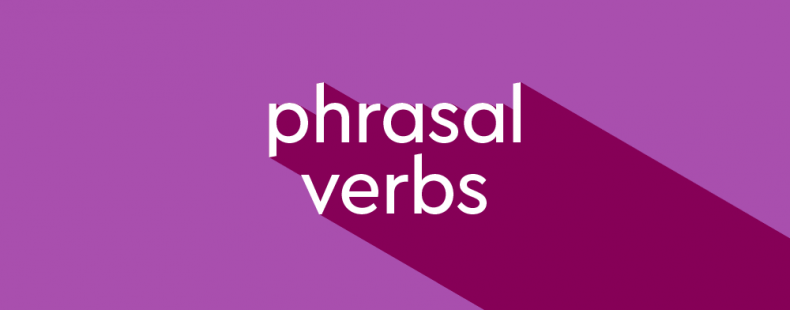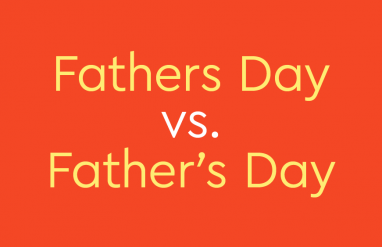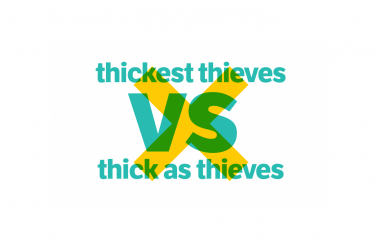We’re all going to Disneyland! Yay! First, we need to line up some tickets. Then, we will need to pack up all of our stuff. Everybody will pile into the airplane, which will quickly take off. After we touch down, we’ll make for the amusement park and get up to all kinds of wacky hijinks!
Before we leave, though, we need to stop and take a look at some of the odd-looking verbs we just used. Verbs are words that we use to refer to actions and states of being, but they are supposed to be just a single word, right? Well, not necessarily. You see, we use different types of verbs in our sentences and clauses, and the phrasal verb isn’t satisfied with being just one word.

What is a phrasal verb?
A phrasal verb is “a combination of verb and one or more adverbial or prepositional particles, as catch on, take off, bring up, or put up with, functioning as a single semantic unit and often having an idiomatic meaning that could not be predicted from the meanings of the individual parts.” There’s a lot going on in this definition, so let’s break it down a little.
The name of phrasal verbs gives an important detail about them: they are phrasal, meaning they consist of a phrase rather than a single word. All phrasal verbs contain a verb and one or more other words. Phrasal verbs can consist of a combination of:
- A verb + an adverb: tear apart
- A verb + a preposition: break in
- A verb + an adverb + a preposition: look up to
Grammatically, phrasal verbs are treated as a single unit rather than separate words. Because of this, sentences that use phrasal verbs may often break the “rule” of not ending a sentence with a preposition. For example,
- I have a lot of projects to work on.
How else are prepositions used? Stay on top of the prepositional game with this review.
Even though phrasal verbs are treated as a single unit, it is possible to separate out the words of some phrasal verbs. For example, the sentences I have to knock down all of the bowling pins and I have to knock all of the bowling pins down have the same meaning and are both grammatically correct. However, not every phrasal verb can be separated like this. For example, we can say I came across some old photos but we wouldn’t say I came some old photos across.
Unfortunately, there is no general rule that determines which phrasal verbs can and can’t be separated. Thanks again, English! You’ll need to learn which phrasal verbs can be split apart as you find them.
Often, phrasal verbs have idiomatic meanings that are different from the individual words that make them up. For example, the word talk means to use words to communicate and the word back means the rear or the opposite of the front. The phrasal verb talk back, though, means to answer rudely. Knowing these idiomatic meanings can help you differentiate between a phrasal verb and a verb that is simply being used with an adverb or preposition. For example,
- Not a phrasal verb: She looked into the cave, but it was too dark to see anything.
- Phrasal verb: The police looked into the anonymous tip.
List of phrasal verbs
We use lots of phrasal verbs in English. The following list contains just some of the many phrasal verbs that we use in sentences and clauses.
- ask for, back up, catch on, dig up, eat out, fall for, get up, hang around, inch along, jump at, kick off, lean on, mix up, nail down, open up, piece together, run down, speak up, turn over, usher in, vote down, wait out, zip up
Phrasal verb examples
Each of the following sentences uses a phrasal verb. Read each sentence carefully and figure out exactly what the sentence is trying to say. Often, phrasal verbs have different meanings than a verb being modified by adverbs or prepositional phrases. You may also notice that some of these phrasal verbs can be separated out and the sentence will still make sense.
- Jeffrey gets mad every time his boss talks down to him.
- My niece looked after my pets while I was on vacation.
- The detective picked up on the man’s suspicious behavior.
- The shortage severely ran up the price of gas.
- I fought back the urge to yell at my annoying neighbor.
- She wanted to finish her essay early, but all of the interruptions really set her back.
- The coaches needed more water to cool the players down.
- Grandpa is taking the kids out to a baseball game.
- The fire marshal shut the business down.
Phrasal verb rules & best practices
The main thing to be careful of when using phrasal verbs is if a phrasal verb can be separated out or not. If you want to be on the safe side, you can simply avoid separating out any phrasal verb until you know for sure which ones can be separated out and which cannot.
Besides this small issue, the verb used in a phrasal verb follows all the rules of any other verb. It must follow subject-verb-agreement, which means it must be singular if the subject is singular and must be plural if the subject is plural.
A phrasal verb can be a regular verb or an irregular verb, so make sure to conjugate the verb correctly. It can be used in any of the 12 verb tenses, can use the passive voice, and can be used in different moods. This means that you may see phrasal verbs accompanied by linking verbs. Most phrasal verbs are used as action verbs, so it is also possible that they may use direct objects. Although this sounds tough, phrasal verbs are not hard to use if you have mastered all of the other types of verbs.
Write smarter with Grammar Coach™
We’ve got a verb for you: perfect! And you’ll perfect your writing when you check it on Thesaurus.com’s Grammar Coach™. This writing tool uses machine learning technology uniquely designed to catch grammar and spelling errors. Its Synonym Swap will find the best nouns, adjectives, and more to help say what you really mean, guiding you toward clearer, stronger, writing. Grammar Coach™ is here to help you with any writing assignment or project you have!













